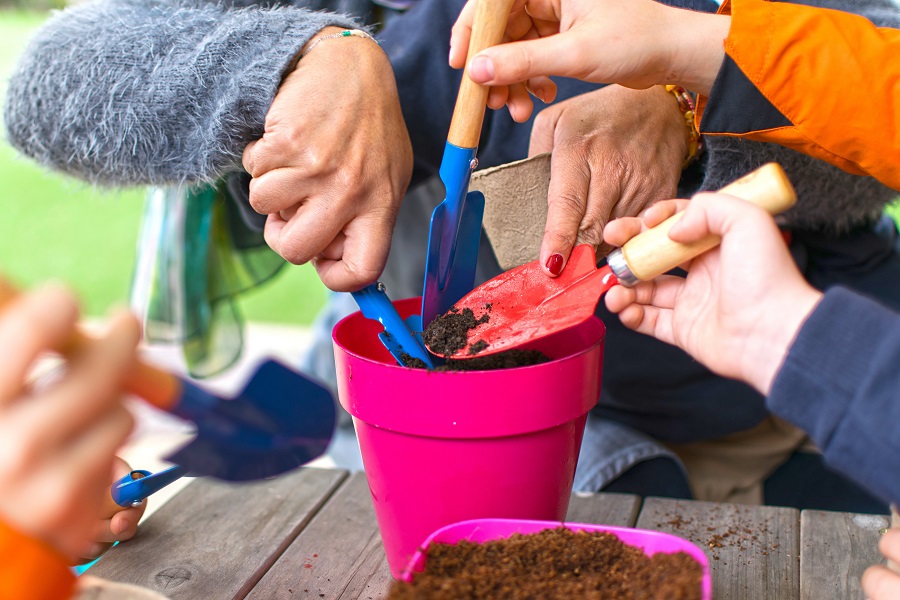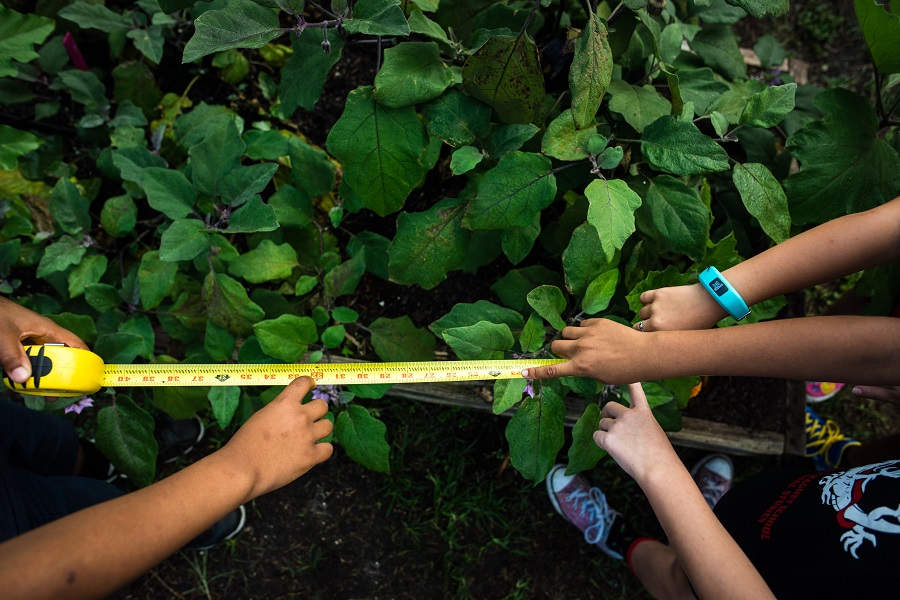Setting up a school garden: a complete guide
Posted on | Posted in Education
We know schools are always looking for ways to enhance students’ learning experiences. One fantastic way to do this is by creating an outdoor garden at your school. Not only does a school garden provide a unique, hands-on learning environment, but it can also promote sustainability, encourage healthy eating and offer space where students can connect with nature.
In this guide, we’re walking you through the process of setting up a school garden. From planning and funding to what you could grow, here’s how to go green at your school.
The benefits of a school garden

Before we begin the how-to, let’s explore why creating a school garden is a great idea.
- Enhanced learning
Gardens provide real-world space for subjects like science and environmental studies. - Improved nutrition
Students are more likely to try fruit and vegetables they’ve grown themselves. - Environmental awareness
Gardening teaches students about sustainability, conservation and different ecosystems. - Physical activity
Gardening gets students moving and enjoying the outdoors. - Mental health benefits
Time spent in nature helps reduce stress and improve overall wellbeing. - Community building
Gardens can help bring together students, teachers, parents and the wider community.
Planning your school garden

Setting up a school garden doesn’t have to be complicated, but it does require some planning. Begin by forming a garden committee with willing staff members, students and parents. This team can help get everyone excited about the garden and be involved with planning, implementing and maintaining.
When choosing a location for your school garden, look for a spot that gets plenty of sunlight and ideally one that has easy access to water. A space close to your classrooms is also important for seamless integration with regular lessons. Don’t worry if you’re short on space – vertical gardens or raised planters can be an effective way to introduce gardening to your lessons.
Get students involved in the design process. This will help create a sense of ownership, responsibility and connection to the space. Consider creating different zones like vegetable beds or a herb garden, and remember to include paths for easy access and maintenance.
Funding your school garden
Creating a garden doesn’t have to strain your school’s budget. Here are some funding options to consider:
- School budget: Make a case for allocating funds from the existing school budget, highlighting the educational and health benefits.
- Grants: Look for local or national grants specifically designed for school gardens.
- Crowdfunding: Set up a campaign to involve the local community in your project.
- Sponsorships: Approach local businesses for support, offering recognition in return.
- Fundraising events: Organise plant sales or farmers markets to generate funds while engaging the local community.
Creating a sustainable school garden

Sustainability should be at the heart of your school garden project. By its nature, starting a school garden is a great step towards sustainability. It helps teach students about local food production, reducing food miles and connecting with nature. It’s a fantastic opportunity to introduce sustainability into your curriculum in a way that’s hands-on and engaging.
Here are some additional tips for creating a sustainable school garden:
- Use a composting system to teach students about recycling organic matter and reducing waste.
- Avoid chemical pesticides and fertilisers. Instead, you could explore natural pest control methods and use organic fertilisers like compost.
- Choose native plants that are adapted to your local climate and need less water and care.
- Consider a rainwater collection system to conserve water.
- Create wildlife-friendly areas with plants that attract bees and other beneficial insects.
By focusing on these sustainable practices, your school garden can become more than simply a place to grow plants – you’re creating a living teaching space where students can learn more about the environment and sustainable living.
What to grow in your school garden

Choosing the right plants is crucial for a successful school garden. Here are some ideas:
- Quick-growing vegetables: Radishes, lettuce and spinach are great for seeing results fast and can be grown in multiple seasons.
- Hardy vegetables: Carrots, potatoes, and runner beans are reliable choices that can withstand varied British weather conditions.
- Fruits: Strawberries or raspberries can be exciting additions.
- Herbs: Mint, rosemary and chives are easy to grow and great for sensory learning.
- Flowers: Sunflowers, marigolds and nasturtiums add colour and some are even edible! They’re also excellent for attracting pollinators.
Remember to consider the climate and school calendar when choosing what to grow. Opt for plants that will be ready for harvest during term time so students can enjoy the fruits of their labour!
Using a canopy to protect a school garden
One great way to enhance your school garden is by installing a canopy. At Canopies UK, we’ve seen first-hand how our school canopies can transform outdoor spaces into versatile, year-round learning environments.
A well-designed canopy offers multiple benefits for your school garden:
Protection from harsh weather
Our canopies shield plants from excessive rain, strong winds and even snow, allowing for gardening throughout the year. This means your students can enjoy and learn from the garden no matter the season.
Creating an outdoor classroom
A canopy provides a sheltered space for garden-based lessons, even when the weather isn’t ideal. This change of scenery can boost engagement and make learning more enjoyable.
Shade and UV protection
Our canopies offer crucial protection from the sun’s harmful UV rays, creating a comfortable environment for students and teachers working in the garden during warmer months.
Extending the growing season
A canopy can boost your garden’s productivity. It helps maintain more consistent temperatures, protecting plants from frost in colder months and excessive heat in summer.
Convenient storage
A canopy offers a dry area for storing gardening tools and equipment, making maintenance more convenient and protecting your equipment from the elements.

Creating a school garden is an exciting journey that offers numerous benefits for students, teachers and the wider community. Whether you’re starting small with a few raised beds or planning a larger garden, we hope you enjoy watching it blossom into a vibrant outdoor learning area that will enrich your school for years to come!
We hope this was helpful and provided some inspiration for starting a school garden. If you want to find out more about our canopies for schools, take a look at the options here or get in touch for a chat.




